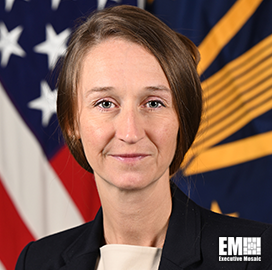The Department of Defense created an office to protect U.S. interests in the Arctic and Iris Ferguson, the newly appointed deputy assistant secretary for Arctic and global resilience at DOD, described the region as critical for homeland defense and power projection, DOD News reported Tuesday.
“It’s important to have an office like this now to try to start laying the groundwork for how we can best prepare ourselves and to know what the challenges of the future may be,” said Ferguson, formerly a senior adviser on Arctic and climate security issues for U.S. Air Force Futures.
“There might not be conflict now – and there hopefully will never be conflict in the Arctic – but we need to be prepared to operate there,” she added.
Ferguson said DOD is witnessing coastal erosion and other geophysical changes that have an impact on its radar sites and other infrastructure and operations and is working to mitigate problems related to melting permafrost foundations.
Ferguson mentioned geopolitical activities by strategic competitors like Russia and China in the Arctic and the U.S. defense strategy in the region.
“The priorities for that defense strategy are in protecting the homeland, ensuring that our national interests are safeguarded and protected, and working with nations on shared challenges,” Ferguson said. “The overarching goal is to ensure we maintain peace and stability in the region.”






